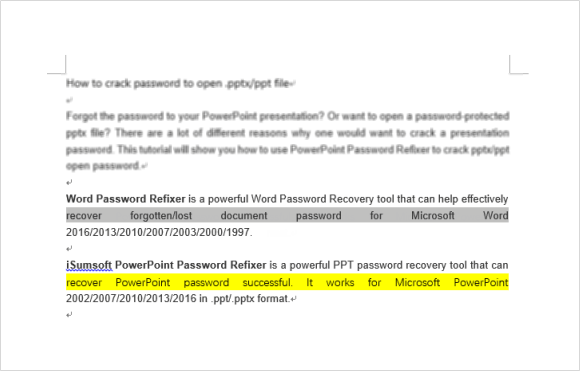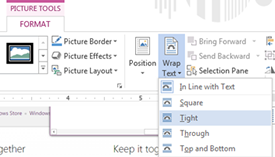

In Word, select the text that you want to adjust.Ģ. To enable Allow Latin text to wrap in the middle of a word, here's how:ġ. While enabling allow Latin text to wrap in the middle of word feature can help fix this problem. No matter how you change the shapes of the characters or tight the spacing for text, the blank spaces cannot be eliminated. The content remains unbiased and authentic.How to Enable Allow Latin Text to Wrap in Word Documentįor some strange reason, you may find there is big blank space between texts in a line, see in the screenshot below. However, it does not affect our editorial integrity. The above article may contain affiliate links which help support Guiding Tech.
Where is word wrap in word 2016 for mac how to#
Next up: Do you want to learn how to remove image background using MS Word? Click on the link below to learn how you can do it without having to use an advanced image editor.

Learning to work with it will go a long way in helping you get things done.
Where is word wrap in word 2016 for mac windows#
It also comes pre-installed with all Windows machines. Word is a pretty document editor, and though it is not the best word processor in the world, it still gets the job done. While the resize and angle option that appears upon selecting the image can also be used, Layout formatting options will let you be more precise with your input values. While you can also use the resize and angle handles we saw above, this tab will let lock aspect ratio and keep it relative to the original picture size.Īt this point, I would suggest you play around with all the different Layout options to understand better how they work. The last tab, Size, will let you resize the image so you can fit it in areas that can be otherwise difficult to manipulate. The second tab is Text Wrapping which you can use to place the image behind the text or front, and determine whether the text is wrapped from on sides or only left/right. The first one is Position where the image is set to the Absolute position to the right of Column horizontally, and below the paragraph vertically.īy default, Word documents are preset to be one column, but the above idea and the settings will work with two or more column layout too.

The difference here is that you can be more precise about the layout and positioning of the image rather than selecting from a bunch of presets. Click on it to find More Layout Options at the bottom. Under the Layout tab, you will find the Position option. Just click once on the image you want to format to reveal resize and movable buttons around the image. This is where the Layout options come into the picture. You will notice that dragging images around Word document is a lot easier now, but it is still not perfect. More often than not, when you insert an image, it ends up appearing somewhere else.

That will tell Word to stop treating pictures as text but instead as images. Change it to Square.ĭon’t forget to click OK every time you change a setting. Under Cut, copy, and paste, you will find Insert pictures as an option. Inside Word Options above, there is another tab called Advanced. One more thing you need to do is change how Word places the image after adding it. You will now see the anchor symbol whenever you insert an image. Under Display, you will see Object anchors option that should be toggled on. Then click on Options at the bottom of the screen in the sidebar. To make anchor points visible, open Word and click on File button. The Word comes with anchor points that by default are not visible. Ideally, you should be able to drag it to wherever you want inside Word. There are two settings to make it easier for you to add images that don’t act and look like text because it's not. I will show you how you can place images in Word without having to curse Microsoft while pulling your hair out or biting your nails off!īefore you begin adding images, you will have to configure Word to play nice with pictures. These options are not so obvious and can be hard to see if you don’t know where to look. The only trouble is finding the correct tools for the job. While Microsoft has not made it easy to place and move images inside Word, it does offer ways to do so. Word often gets far less credit than it deserves. One issue that users have faced continuously with Word is the inability to move around, and adjust, images and place them correctly in Word. But Google too looked at Word for inspiration when it was trying to come up with an interface. Microsoft Word has long been the default champion of the document editing world, that is until Google Docs came along.


 0 kommentar(er)
0 kommentar(er)
